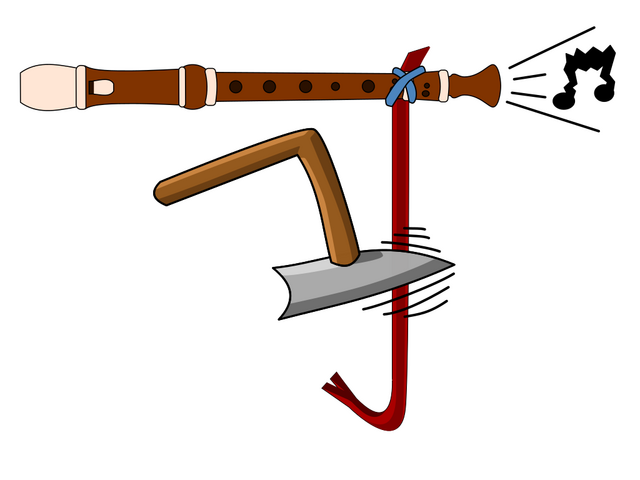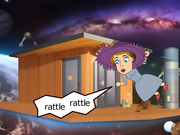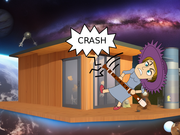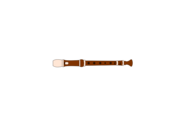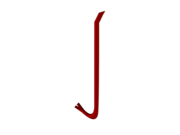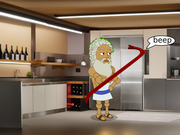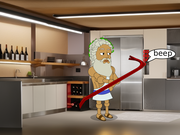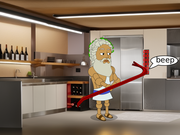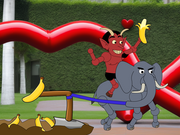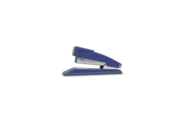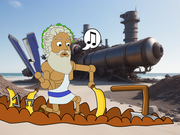Mnemonic comic for ㇆
Translation
Mnemonic
Comments
Let's start combining components to build new characters!
To me, the basic stroke ㇆ looks like a plow. To write it, you first put down a horizontal line from left to right (一 = flute) and then, in one stroke, follow up with a vertical line ending in a hook (亅 = crowbar).
The stroke ㇆ does not have any pronunciation associated with it, so there is no actor and no background in this comic.
In this comic you can see how we use the mnemonic elements of the components used to write the character (the flute and the crowbar), as well as the mnemonic symbol for the character itself (the plow). Whenever we construct a story for a character using ㇆, we'll use the plow and not the plow's component, as well as the new character's mnemonic symbol. In this way we can construct more and more complicated characters level by level with very memorable, everyday objects.
As a general rule, it is good practice to try to use the specific features of the mnemonic symbols in the stories: the flute produces sound, and the crowbar is essentially a long bar of metal which can be stimulated to produce vibrations. Try to imagine what it would feel like to stroke a steel crowbar with a plow, and what the sounds coming out of the flute might sound like.
Matthias, 6 months ago (edited 6 months ago)
㇆ character breakdown
Characters with ㇆ as component
Maud Younger (y) is helping an excavator (也) in the elevator (e3). Together they are excavating a dinosaur bone (丨): Maud turns the earth with a plow (㇆), while the excavator moves the earth with a shovel (乚).
